A friend of mine asked me once, “What are the first two words that come to mind when you hear the word ‘Glock’?” I said, “Reliability, perfection.” We look today at the perfection of the Glock 19 Gen 3 vs. Glock 19 Gen 4
Up until today, I’m not sure if I really should have said that second word. But it’s on Glock’s logo, and I’m a very visual person.
Glock 19 Reliability
Glocks are without a doubt some of the most reliable firearms in the world. Several countries’ military and law enforcement use them. Plastic gun fans swear by them.
To say these handguns are reliable is an understatement — they’ve been submerged in water and mud and tortured to hell and back, and they would still spit lead like nobody’s business. That’s how reliable Glocks can be.
“Perfection” as a concept, at least to me, is a misnomer. Not to be overly philosophical about it, but no matter how “perfect” something is, there will always be something better. Anyone can give me the highest number they can think of and I only need to add 1 to it, I’ll have a greater number.
As the CEO of a world-renowned copier machine brand once said, “In the race for quality, there is no finish line.”
Glocks are a lot of good things but perfect. True, some have been submerged in mud, but in one of those tests even the unsightly, cheaply-made Hi-Point beat a Glock in reliability. And Glocks are not immune to catastrophic failures either. No firearm is, in fact.
If that’s not enough proof, consider the following argument: If these handguns were perfect, why is there always a newer generation of Glocks coming out every once in a while? Are we to assume that perfection just fades over time?
In Round 7 of our Handgun Showdown series, we’re comparing two versions of the Glock 19: Gen 3 vs. Gen 4, to try and answer that question.
Table Of Contents
The Tale of the Tape
| Compare Firearms | G19 | G19C Gen4 |
|---|---|---|
| Caliber/System | 9x19 / Safe Action | 9x19 / Safe Action |
| Length | 187 mm / 7.36 in. | 185 mm / 7.28 in. |
| Height | 127 mm / 4.99 in. | 127 mm / 4.99 in. |
| Width | 30.00 mm / 1.18 in. | 30.00 mm / 1.18 in. |
| Barrel Height | 32 mm / 1.26 in. | 32 mm / 1.26 in. |
| Between Sights | 153 mm / 6.02 in. | 153 mm / 6.02 in. |
| Barrel Length | 102 mm / 4.01 in. | 102 mm / 4.01 in. |
| Weight (Unloaded) | 670 g / 23.65 oz. | 670 g / 23.65 oz. |
| Weight (Loaded) | 855 g / 30.18 oz. | 855 g / 30.18 oz. |
| Trigger Pull | ~2.5 kg / ~5.5 lbs. | ~2.5 kg / ~5.5 lbs. |
| Trigger Travel | ~12.5 mm / ~0.49 in. | ~12.5 mm / ~0.49 in. |
| Barrel Rifling | Right Hand, Hexagonal | Right Hand, Hexagonal |
| Length of Twist | 250 mm / 9.84 in. | 250 mm / 9.84 in. |
| Magazine Capacity (Standard) | 15 | 15 |
| Magazine Capacity (Optional) | 10/17/33 | 10/17/33 |
| Glock 19 | Glock 19C Gen4 |
|---|---|
| Overall Length: 7.36 in. | Overall Length: 7.28 in. |
| Height: 4.99 in. | Height: 4.99 in. |
| Width: 1.18 in. | Width: 1.18 in. |
| Barrel Height: 1.26 in. | Barrel Height: 1.26 in. |
| Barrel Length: 4.01 in. | Barrel Length: 4.01 in. |
| Sight Radius: 6.02 in. | Sight Radius: 6.02 in. |
| Weight (mag empty): 23.65 oz. | Weight (mag empty): 23.65 oz. |
| Weight (mag full): 30.18 oz. | Weight (mag full): 30.18 oz. |
| Trigger Pull: around 5.5 lbs. | Trigger Pull: around 5.5 lbs. |
| Trigger Travel: 0.49 in. | Trigger Travel: 0.49 in. |
| Barrel Rifling: right hand, hexagonal | Barrel Rifling: right hand, hexagonal |
| Length of Twist: 1 in 9.84 in. | Length of Twist: 1 in 9.84 in. |
| Magazine Capacity: 15 rounds | Magazine Capacity: 15 rounds |
| Optional Mags: 10-, 17- and 33-round mags | Optional Mags: 10-, 17- and 33-round mags |
Generational Differences
When the first Glock pistol (Glock 17) was released in Austria in 1982, it caused quite a sensation. It wasn’t the first of its kind, sure — that honor belongs to the H&K VP70 which was produced in Germany in 1970.
But it became the success that it is today because it just worked (that, and the VP70 had a terribly heavy ~20-lb. trigger pull weight). It was so reliable that it was adopted by the Austrian military, a few years later by Norway and Sweden, and later in the 1990s by US law enforcers.
Six years after, it got a few upgrades. People were probably complaining about not getting a secure purchase on the grip, so the newer Glock pistol grips got their front and rear straps checkered.
The older plastic magazines also got an upgrade — the newer version had a metallic frame to reinforce the plastic, eliminating any possible feeding/chambering issues. The barrel and slide were reinforced while the recoil spring was integrated with the guide rod, becoming a single captive piece.
To Glock enthusiasts, these changes marked the end of the first generation. Gen 2 was born.
Gen 3
Up until 1990, all Glock pistols had a blocky grip area. Another six years later, the second generation got a bit of a makeover which improved the ergonomics as well as the aesthetics of these pistols.
Finger grooves were added to the front of the grip, as well as a notch that serves as a thumb rest on both sides of the upper grip area.
The dust cover on the frame got a nice upgrade: a rail for attaching lasers or flashlights. Glock calls this the Universal Rail, which would continue to be a feature in the next two generations.
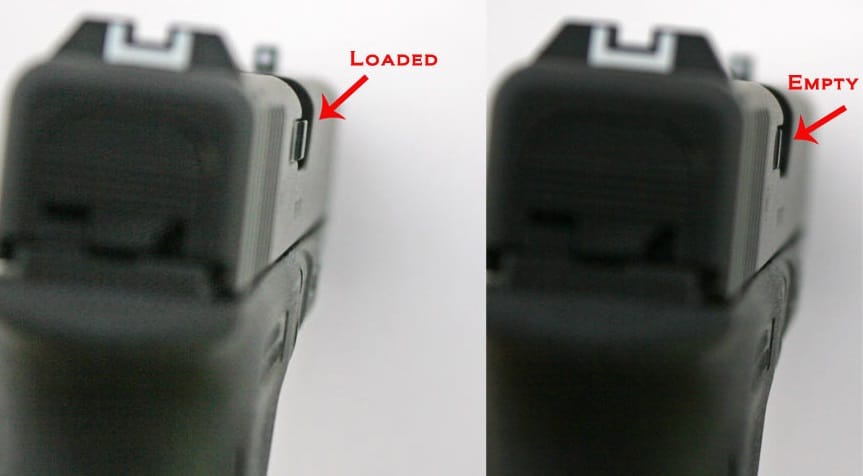
These changes in 1996 resulted in what’s known as the Glock Gen 3, and up to this article’s writing, Gen 3 pistols are being sold on Glock’s website.
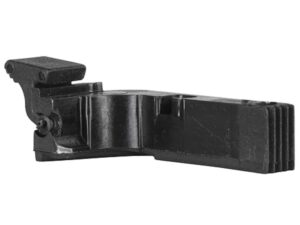
In 2009, just a year before the newer fourth generation would be released, Glock started offering newer Rough Textured Frame (RTF) versions of their pistols.
The RTF2 frame’s grip was textured with very aggressive needle-like checkering, while the RTF3 had the same needle-like checkering that wasn’t as aggressive. The rear slide was also given curved serrations instead of the typical boring vertical ones.
Gen 4
A year after the last cycle of upgrades for the their third generation pistols, Glock released the Gen 4. Up to that point, they never really acknowledged the way enthusiasts categorized their pistols on “generational” improvements.
Now, all new models that have significant design improvements compared to all previous Glock releases have “Gen 4” laser-etched on their slides, making them easily distinguishable even to those who aren’t Glock fanboys.
In addition, Gen 4 models have other new features readily visible out of the box, the first and probably the most obvious is the finish.
New Slide Finish
Glock uses a salt-bath ferritic-nitrocarburizing process which, depending on who you ask, is labeled either Tenifer or Melonite (enthusiasts argue that the company has always used Tenifer until 2011 when they first started using Melonite — both are trademarked processes sold by the same company) to treat the slide’s surface for corrosion resistance.
But the coating they use (on top of the treated slides) is a little different compared to previous versions, resulting in a lighter shade of gray finish in Gen 4 models.
New Interchangeable Backstrap Options
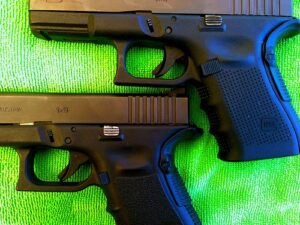
This is to help different users (i.e. those with bigger hands) get a more solid purchase on the grip. A good grip allows for more accurate shots and better recoil control, as was discussed in Round 1 of this Handgun Showdown series.
And this adaptive grip feature doesn’t only benefit people with larger hands, because to make sure people with smaller hands also profit, the company designed all Gen 4 pistol grips to be relatively thinner compared to all previous generation Glocks.
New Checkering Texture
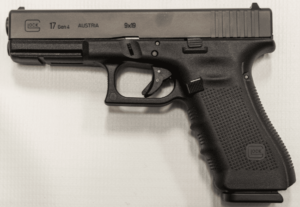
But unlike RTF versions with grips that had needle-like checkering, Gen 4 uses flat-cone-like checkering which is comfortable and easy on the hands while providing the same level of grip traction for easier recoil control.
Larger Magazine Release Button
Prior to Gen 4 being released, all Glock pistols suffered from a relatively minor but nonetheless annoying problem of having a small (almost miniscule to some), low-profile magazine release button.
I say minor because for one, with enough practice, the smaller magazine release will eventually become easier to operate. And since most Glock pistols have high-capacity magazines anyway, this only really becomes a nuisance in the range.
I also think that for typical self defense situations, a Glock 19 with 16 rounds of 9mm (15 in the mag and an additional round in the chamber) will be more than enough to stop any two-legged threat (unless you’re facing six or more bad guys, which is highly unlikely unless you’re in law enforcement or in the military, in which case an AR15 or a shotgun shouldn’t be out of reach — even if you’re not, most bad guys would run at the sound of a warning shot).
Still, a lot of people were complaining about the tiny magazine release button on Gen 3 pistols. So for Gen 4, the company decided to make that button significantly larger.
They also made it reversible out of the box instead of ambidextrous (drop-in aftermarket ambidextrous mag release buttons are still available for Gen 4s though). Left-handed shooters can easily put it on the gun’s left side so it can be pushed with the left thumb.
And to make sure the reversible mag release will work reliably, all Gen 4 magazines now have a notch on both sides.
New Recoil Spring Assembly
Comparing the business end of a Gen 4 pistol to that of a Gen 3’s, the recoil guide rod’s diameter is bigger on the Gen 4.
To accommodate the significant increase in the recoil guide rod’s diameter, Gen 4 slides have to have a bigger cutout portion in front, which means a Gen 3 recoil guide rod will not fit in a Gen 4 slide (unless you use an adapter ring that Glock sells).
The recoil guide rod’s diameter being bigger on Gen 4 models is not for aesthetics though. There’s a mechanical reason behind this new feature.
Gen 3 pistols chambered for .40 S&W use the exact same dimension recoil guide rod and recoil spring that Gen 3 9mm pistols use. Since Glocks were originally designed for the 9mm which has a weaker recoil compared to the .40 S&W, the recoil guide rod and recoil spring rated for 9mm recoil are considerably weaker against the snappy recoil of the .40 S&W. This resulted in faster frame wear in Gen 3 Glocks chambered for the .40 S&W.
To alleviate this problem, Glock employed the use of a newly designed recoil guide rod-spring assembly. It now has two captive springs, a smaller and a larger one, and because of a larger spring is used this time, the recoil guide rod’s front end diameter also have to be increased.
This new spring and guide rod assembly allows for better recoil force absorption that significantly minimizes frame wear and in turn results to better user recoil control in Gen 4 pistols chambered for any caliber higher than the 9mm. Better recoil control allows for faster sight re-acquisition and faster follow-up shots, as we determined in Round 2 of this Handgun Showdown series.
Other not-so-good changes
Because the Gen 4’s grip is thinner, the frame was also designed to be a little smaller, for which a smaller trigger group was designed. For this reason, a Gen 4’s trigger group would be too small to fit in any previous generation Glock frame.
Trigger Safety Issues With Glock Gen 4
That part of the trigger bar that sticks out which deactivates the trigger safety for when the user pulls the trigger to shoot, that looks different now. The company put a little bulge on it to make sure the firing pin stays centered when striking a chambered bullet’s primer — this is so Gen 4 Glocks stay reliable even with the slightly slimmer frame profile.
But it resulted in a slightly heavier trigger pull, which is why some people who own both Gen 3 and Gen 4 Glocks claim that the Gen 3’s trigger is slightly easier to pull. There are some who even file that little bulge smooth to get a lighter trigger pull.
The ejector on newer Gen 4 frames is also a little smaller but thicker and has a more pronounced curvature. This wasn’t always the case. Glock only added this new ejector in later production Gen 4 frames because the earlier ones used the same ejector that Gen 3s use which didn’t work out the way they thought it would.
Because of the slimmer frame and slightly modified internals, Gen 3 ejectors installed in early Gen 4s resulted in stovepipes (i.e. empty case is not getting properly pushed out of the ejection port, causing a jam).
Glock 19 Ejector Issues
The company identified the problem to be the older version of the ejector not being compatible with the new frame and trigger group designs, so newer production Gen 4s were given the new ejector.
The problem with this is people unfortunate enough to have bought early production Gen 4 models are stuck with a handgun that is a disgrace to the manufacturer’s reputation.
All Glocks are supposed to be reliable, but their handgun stovepipes. The only fix for this issue is to buy a new trigger housing with the integrated new ejector design as an aftermarket drop-in upgrade (Part no. 30274).
Price
In general, Gen 4 pistols cost more $$$ compared to Gen 3s. But since we’re only looking at Glock 19 for both generations, we’ll only be including the factory price for those two pistols here.
As of this writing, on Glock’s website, the Glock 19 Gen 3 costs $475, while the Glock 19 Gen 4 costs $550. That’s a $75 increase which some might find unappealing, but we’ll get to this in a bit.
So Which one is Better? Glock 19 Gen 3 vs. Gen 4
Which slide finish is better between these handguns is a matter of personal taste. I prefer the darker shade of the Glock 19 Gen 3’s slide, but others don’t really care too much about the finish as long as the slide is protected from corrosion — that’s something I can agree with. So none of the two pistols gets a point here.
The interchangeable backstraps that come with the Gen 4 Glock 19 might be helpful for people with bigger hands. I have medium-size hands so I don’t really care for it too much. Again, none of the two pistols gets a point here, at least for me.
Glock 19 Gen 3 vs. Gen 4 – The Look
The new checkering texture on the Glock 19 Gen 4 looks and feels great. Some DIY gurus and tacticool gun nuts might argue that the Gen 3’s grip can be stippled, but DIY stippling is risky if you don’t know what you’re doing (you’ll just weaken the frame and ruin a working firearm), and having a qualified gunsmith do it for you can cost unnecessary expenses (I would be content with just using grip tape). So Gen 4 wins here, no doubt.
Gen 3 Glock 19s having a smaller low-profile magazine release button wouldn’t be an issue if the user practices pushing it enough times, but the larger magazine release button on the Glock 19 Gen 4 is definitely an improvement. Another point for Gen 4.
 Glock 19 Gen 3 vs. Gen 4 – Recoil
Glock 19 Gen 3 vs. Gen 4 – Recoil
Gen 4 Glock 19s using the new double recoil spring assembly with the fatter guide rod is kind of pointless. Glock 19s are chambered for 9mm which is known for a relatively lower recoil compared to other more powerful handgun calibers.
However, if you’re looking to upgrade to a 960 Rowland (a 9mm on steroids that can surpass .357 magnum ballistics), it might be useful. So another point for Gen 4.
If you bought an early production Glock 19 Gen 4 though and you’re experiencing stovepipes, sorry to say this but you’re going to have to install that new trigger housing part (with the new ejector) to get it to work reliably. So much for owning a handgun that’s supposed to be reliable, huh? Gen 3 gets a point here, unfortunately.
Glock 19 Gen 3 vs. Gen 4 – Price
As for differences in price, the Glock 19 Gen 3 is $75 cheaper but it only comes with two magazines.
| Product Name | Where to Buy | |
|---|---|---|
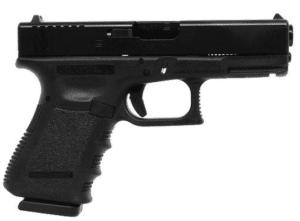 | Glock 19 Gen 3 | |
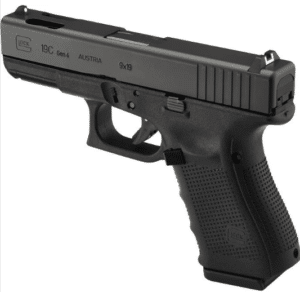 | Glock 19 Gen 4 |
Glock 19 Gen 3 For Sale
The Glock 19 Gen 4 on the other hand is $75 more expensive but considering the factory upgrades and that it comes with three magazines, it’s not too bad.
And if you have large hands and you can use the backstraps that come with it, you get even more bang for your buck! Thus, Gen 4 gains another point.
Glock 19 Gen 4
Glock 19 Gen 3 vs. Gen 4 – Conclusion
Glocks will never be perfect. The fact alone that they always have newer “generational” improvements should be proof enough. And I, for one, hate how they look. They’re never going to be the timeless beauties that the 1911s are.
But Glocks don’t have to be perfect. These are highly reliable handguns priced just right. And the company listen to their customers, they never rest on their laurels. They just have to keep doing what they’ve been doing for over three decades.
The Gen 4 Glock 19 (and all other Gen 4s) wins over its Gen 3 counterpart. With all the upgrades Glock has masterfully added into their newer Gen 4 pistols, even factoring in the slightly higher price tag, there really is no point in buying any Glock Gen 3s. However, they all share similar upgrades, and you might want to find out what are the best Glock sights, or the best Glock shoulder holsters, before buying them.
However, the Gen 3 might be the better option if you’re like a lot of Gen 3 owners and:
- You can work with the smaller magazine release button just fine;
- You’re okay with spending extra on stippling the grip or doing it yourself or putting grip tape on it — or you don’t mind the less aggressive, almost non-existent grip texture;
- You’re a die-hard 9mm fan and you’re not looking to buy a 960 Rowland conversion barrel in the foreseeable future because you don’t see the point;
- You’re such a scrooge that you think the $75 markup on the Glock 19 Gen 4 is not worth it (or you’re just broke);
The Winner Between Glock 19 Gen 3 vs. Gen 4?
Me being neutral and objective about all this (I’m not a Glock fan), I’ll have to say that the Glock 19 Gen 4 is the clear winner of this round. And it’s a well deserved win.
If you’re looking to buy one of these, or already own a model, you might want to check out this article about the best Glock 19 holster.
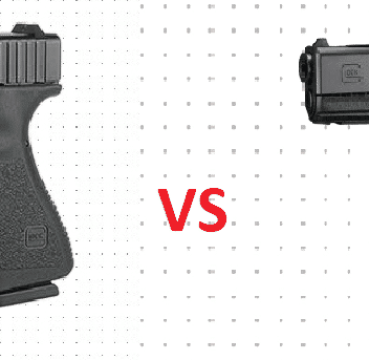






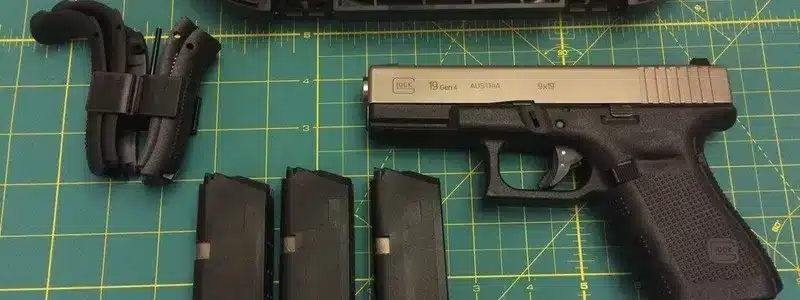
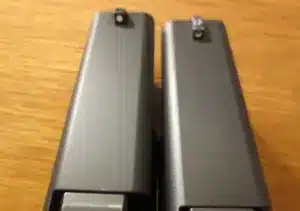

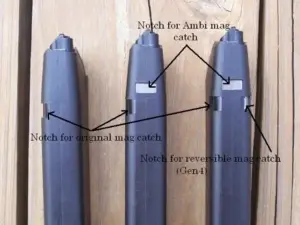
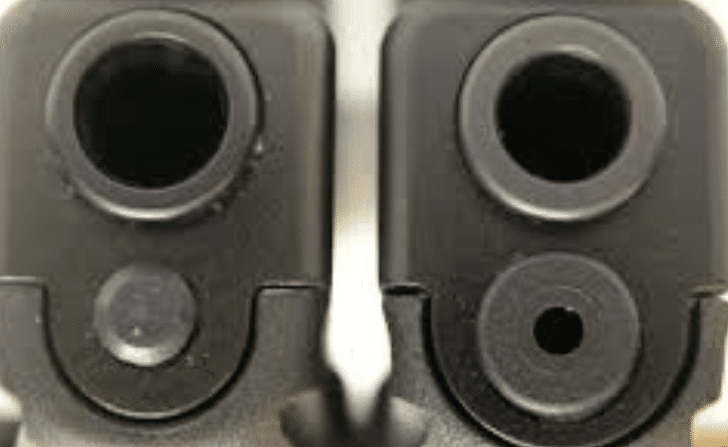

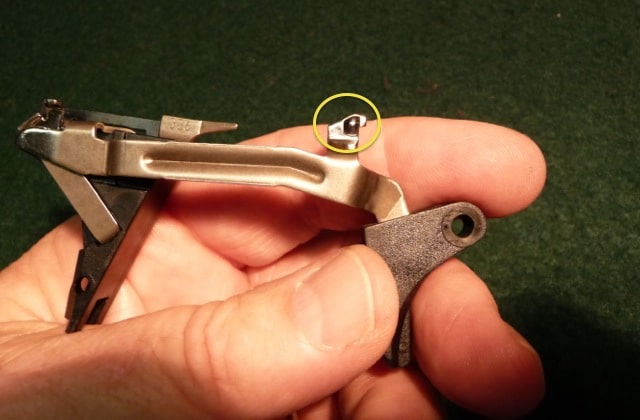



 Glock 19 Gen 3 vs. Gen 4 – Recoil
Glock 19 Gen 3 vs. Gen 4 – Recoil








6 Responses
Have to disagree with your criteria. Reliability is king. Give me a gun that doesn’t jam every time over a gun with questionably improved grip stippling. Not sure you can declare a “clear winner” for a gun known for stovepiping. And definitely question how reliable it’s going to be converting to 960 Rowland when everything about the gun is precision designed around the 9mm parabellum cartridge. If you are guaranteed a later version of the Gen 4, then no problem.
Price is an important factor too. The $75 difference can buy you a magwell, extended slide and mag release buttons, extra magazines, or maybe a nice concealed carry holster.
How did you find numerous details? I like how that you organize everything, since it’s really easy to read.
All in all, I can recommend this guide to everybody who
is interested in that topic.
You left out one undebatable reason to buy a Gen 3 over a Gen 4: the letters C & A. Can’t get Gen 4’s & 5’s in CA, only the Gen 3! Just learned that today while shopping…
Mike,
Thanks for the article on the Glock 19. I’ve been a shooter of the Springfield XD-9 for about 15 years now, but the extractor broke after only 6,000 rounds, so I’m going back to the Glock for its excellent reliability. I used to own and carry a Glock 17 gen 1 back in the ’90s when I worked at a gun store, and in just a few years I put several thousand rounds through it with out ever having a failure of any kind. I went with the XD because it feels better in my hand, but after its extractor reliability problem, I’m going with the Glock once again as my primary handgun.
True, the Glock pistol is about the ugliest gun on the market. Shoot baby shoot, shoot it does . That all that matters. I still carry a colt commander, and full size colt. I carry my gen 3 in a Blade Tech. I own a gun store and by far, our best seller are Glocks
Chris, thanks for reading the article. Yep, gotta love them commander Colts. I carry a commander-size 1911 myself (a customized Norinco tuned by a gunsmith friend) and I’m never going to replace it with any Glock. That said Glocks aren’t your gun store’s bestsellers for no reason, so we really got to give it to Gaston.